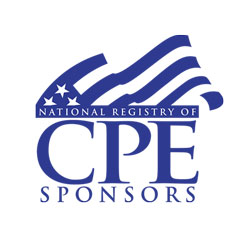Oil & Gas Modeling Course
Course Objective

At completion, trainees will have developed a complete Oil & Gas model using various supporting schedules
Trainees develop an Oil & Gas (O&G) financial model completely from scratch, inputting historical data as well as macro– and company-specific assumptions to project out financial statements using step-by-step instruction on selecting, locating, and developing appropriate projection drivers. At completion, trainees will have developed a comprehensive O&G model using various supporting schedules. Trainees build O&G models using Excel templates and the exact way they would on the job.
This course is used to train new hires at:
What You Will Learn
Course Highlights
 Intuitive, Self-Paced and Comprehensive
Intuitive, Self-Paced and Comprehensive
Wall Street Prep’s Oil & Gas Financial & Valuation Modeling Self Study Program is intuitive and self-paced. You should expect to spend approximately 100 hours to complete it. The program uses approximately 700 pages of tutorial guidance and Excel model templates to teach students how to build, analyze, and interpret Oil & Gas financial and valuation models in a step-by-step fashion, at their own pace.
 Real World “On the Job” Investment Banking Training
Real World “On the Job” Investment Banking Training
The Oil & Gas Financial & Valuation Modeling Self Study Program bridges the gap between academics and the real world to equip O&G finance and industry professionals with the practical financial skill set they need on the job. The program utilizes a case study format, as students follow their tutorial guide alongside the Excel model templates, and are directed to the appropriate external documents (SEC filings, research reports, etc.) in order to build complex O&G Financial & Valuation models the way they would on the job.
 Support Center
Support Center
Upon enrollment, students gain 24-month free access to Wall Street Prep’s Online Support Center, where they receive answers to questions, free downloads, and important updates.
 Private Online Tutoring (Additional Fee Applies)
Private Online Tutoring (Additional Fee Applies)
Want a little extra attention? Live video-chat tutoring is available with experienced investment bankers for a fee of $199/hour. In addition, your tutoring sessions enable you and your tutor to share models, a virtual blackboard and any other files via an integrated web and phone platform that enhances the learning experience.

Prerequisites
This course does not assume a prior background in Oil & Gas Modeling. However, those who enroll should have an introductory knowledge of accounting (e.g. interaction of balance sheet, cash flow, and income statement) and proficiency in Excel. Students with no prior background in Accounting should enroll in the Accounting Crash Course. Students with limited experience using Excel should enroll in the Excel Crash Course.
Course Agenda

Earn CPE Credits with WSP Online Courses
The Wall Street Prep Quicklesson Series
7 Free Financial Modeling Lessons
Get instant access to video lessons taught by experienced investment bankers. Learn financial statement modeling, DCF, M&A, LBO, Comps and Excel shortcuts.





























